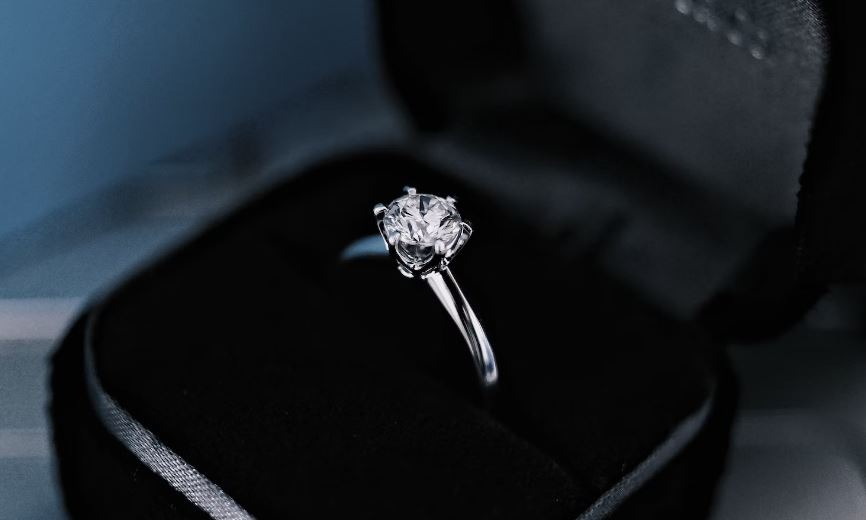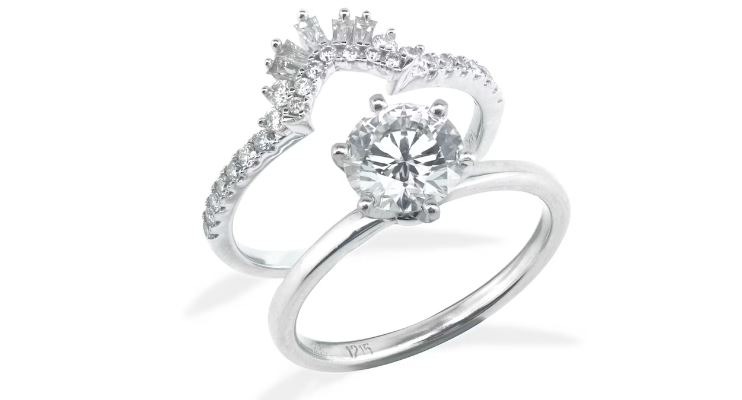The moment you decide to propose to your partner is a significant one, filled with excitement and anticipation. However, before you get down on one knee and present that beautiful engagement ring, there’s an essential decision to make – choosing the suitable metal for the ring’s band. The metal you select affects not only the ring’s appearance but also its durability and long-term value. With a plethora of options available, it’s crucial to understand the characteristics of different metals to make an informed choice. In this guide, we will explore various metal options and provide you with valuable insights on how to choose the perfect metal for your engagement ring.
The Importance of Metal Selection
Your engagement ring is a symbol of your love and commitment to one another. It is a piece of jewelry that will be cherished for a lifetime, passed down through generations, and is a constant reminder of your special bond. Therefore, choosing the right metal is not a decision to be taken lightly. It is essential to consider both your partner’s personal style and the practical aspects of everyday wear when making this choice.
Here are some key factors to keep in mind when selecting the metal for your engagement ring:
1. Style Preferences
Start by considering your partner’s style preferences. Do they typically wear gold or silver jewelry? Are they drawn to traditional or more contemporary designs? Understanding their taste will help you narrow down your options.
2. Skin Tone
Consider your partner’s skin tone when choosing the metal. Some metals complement certain skin tones better than others. For instance, warm-toned metals like yellow gold and rose gold tend to flatter those with warm undertones, while white metals like platinum and white gold complement cool-toned skin.
3. Durability
Engagement rings are meant to be worn daily and should stand the test of time. Different metals have varying levels of durability, so think about how active your partner is and whether they’ll be comfortable with a softer or harder metal.
4. Maintenance
Each metal has its own maintenance requirements. Some may develop a patina over time, while others remain shiny and pristine. Consider how much effort your partner is willing to put into maintaining their ring’s appearance.
5. Budget
Your budget will also play a significant role in your metal selection. Some metals are more expensive than others due to their rarity and unique properties.
Exploring Metal Options
Now that you understand the importance of selecting the right metal let’s delve into the various metal options available for engagement rings, along with their unique characteristics:
1. Yellow Gold
Characteristics: Yellow gold is a classic choice for engagement rings and has been used for centuries. It exudes warmth and elegance. Yellow gold engagement rings are typically available in 14k or 18k varieties, with 18k being purer and more valuable.
Pros:
Timeless and traditional.
Complements a variety of gemstone colors.
Resistant to tarnish and corrosion.
Cons:
Can be prone to scratching due to its relatively soft nature.
May require more frequent polishing to maintain its shine.
2. White Gold
Characteristics: White gold is a popular choice for engagement rings, offering a similar look to platinum but at a lower price point. It is made by alloying yellow gold with white metals like nickel, palladium, or zinc and is then rhodium plated to achieve its white color.
Pros:
Modern and elegant appearance.
More affordable than platinum.
Hypoallergenic when alloyed with palladium.
Cons:
Requires periodic re-rhodium plating to maintain its white color.
Some people may be allergic to nickel, so ensure it is alloyed with a hypoallergenic metal if your partner has sensitive skin.
3. Rose Gold
Characteristics: Rose gold, also known as pink or red gold, has gained popularity in recent years for its romantic and vintage appeal. It gets its pinkish hue from the addition of copper to the gold alloy.
Pros:
Unique and romantic look.
Complements a wide range of gemstones.
Highly durable due to the copper content.
Cons:
May not be ideal for those with copper allergies.
May develop a patina over time, which some find charming while others may prefer to maintain its original color.
4. Platinum
Characteristics: Platinum is the pinnacle of luxury and durability in the world of engagement rings. It is naturally white and does not require rhodium plating like white gold. It is a dense and heavy metal, making it an excellent choice for those who prefer substantial jewelry.
Pros:
Extremely durable and scratch-resistant.
Naturally white, so it won’t fade or change color over time.
Hypoallergenic and suitable for sensitive skin.
Cons:
Higher price point compared to other metals.
May develop a patina, but this can be a desirable feature for some.
5. Palladium
Characteristics: Palladium is a relatively new entrant in the world of engagement ring metals but has gained popularity due to its similarities to platinum. It is a lustrous, white metal that is part of the platinum group of metals.
Pros:
Similar in appearance and durability to platinum but more affordable.
Hypoallergenic and suitable for sensitive skin.
Lightweight and comfortable for daily wear.
Cons:
Less widely available than other metals, which may limit design options.
May develop a patina over time.
6. Titanium
Characteristics: Titanium is a lightweight and durable metal that’s becoming increasingly popular for engagement rings. It’s naturally gray but can be anodized to achieve various colors.
Pros:
Exceptionally strong and durable.
Lightweight and comfortable for everyday wear.
Available in various colors for a unique look.
Cons:
Not easily resizable due to its hardness.
Limited design options compared to traditional metals.
7. Tungsten
Characteristics: Tungsten is one of the hardest metals used in jewelry. It has a gunmetal gray appearance and is highly scratch-resistant.
Pros:
Exceptionally durable and scratch-resistant.
Retains its original appearance over time.
Affordable compared to precious metals.
Cons:
Cannot be resized.
May shatter if subjected to extreme force.
8. Cobalt
Characteristics: Cobalt is a white metal that is often used as an alternative to platinum or white gold. It has a bright white color and is highly resistant to tarnish.
Pros:
Resistant to tarnish and corrosion.
Hypoallergenic and suitable for sensitive skin.
More affordable than platinum.
Cons:
Limited resizing options.
Less common than other metals, which may limit design choices.
Making the Final Choice
Choosing the right metal for your engagement ring is a decision that requires careful consideration. While each metal has its own unique characteristics and appeal, there is no one-size-fits-all answer. The perfect metal for your engagement ring ultimately depends on your partner’s personal style, lifestyle, and budget.
Here are some steps to help you make the final choice:
1. Discuss Preferences with Your Partner
Open communication is key. Before making any decisions, talk to your partner about their metal preferences, taking into account their style, skin tone, and any metal allergies they may have.
2. Set a Budget
Determine your budget for the engagement ring. Keep in mind that the metal choice will affect the overall cost of the ring, so make sure it aligns with your financial plans.
3. Consider Lifestyle
Think about your partner’s lifestyle and how the ring will fit into it. If they lead an active life, a more durable metal like platinum or palladium might be a better choice. If they prefer something lightweight, titanium or tungsten could be ideal.
4. Visit Jewelry Stores
Visit jewelry stores to see different metals in person and try on various styles. This will give you a better sense of how each metal looks and feels on the hand.
5. Consult with a Jeweler
Consulting with a professional jeweler can provide valuable insights and guidance based on your preferences and budget. They can also help you choose a metal that complements the chosen gemstone.
6. Consider Customization
If none of the readily available options seem perfect, consider customizing the ring with a combination of metals or unique design elements to create a truly one-of-a-kind piece.
7. Think Long-Term
Remember that your engagement ring is a symbol of your lasting commitment. Consider how the chosen metal will age over time and whether any maintenance or patina development aligns with your partner’s preferences.
Conclusion
Choosing the right metal for your engagement ring is a thoughtful and important decision. It’s not just about aesthetics; it’s about selecting a metal that resonates with your partner’s style and personality while also considering practical factors like durability and maintenance. Take your time, explore different options, and involve your partner in the decision-making process to ensure that the engagement ring you choose becomes a cherished symbol of your love for many years to come.



